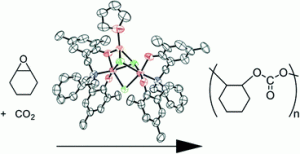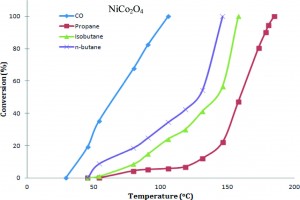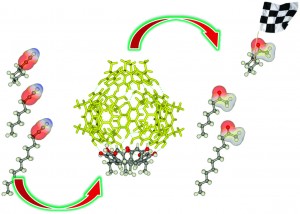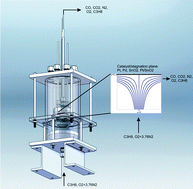Homogeneous catalysts for the copolymerisation of carbon dioxide and epoxides encompass a wide range of main group and transition metal complexes; these often incorporate multidentate ligands such as porphyrins, salens, and salans, among other related classes. Amine-bis-phenolates are one class of ligands which have been employed as supporting scaffolds for polymerisation catalysts, providing tunability at the metal centre by functional group modifications at both the aromatic ring positions and on the neutral pendent donor atom. Recent research by the Kozak Group at Memorial University of Newfoundland has focussed on developing amine-bis(phenolate) complexes of mid-to-late transition metals as catalysts for this reaction. In a recent paper published in Catalysis Science & Technology, three six-coordinate chromium complexes with two types of pendent arm were evaluated as copolymerisation catalysts.
The most active catalyst in this study utilised a ligand featuring a coordinated tetrahydrofuranyl pendent group, while ligands featuring non-coordinating benzyl groups resulted in lower yields of the poly(cyclohexene carbonate) product. Although the polymer produced was atactic in all cases, the catalyst was found to be advantageous due to the high percentages of carbonate linkages prevailing in the final product with no evidence suggesting undesirable formation of cyclic carbonate formation.
Read the orginal paper below, which was also cited as a HOT article by the Catalysis Science & Technology referees:
Chromium(III) amine-bis(phenolate) complexes as catalysts for copolymerization of cyclohexene oxide and CO2
Hua Chen, Louise N. Dawe, and Christopher M. Kozak
Catal. Sci. Technol., 2014, Advance Article, DOI: 10.1039/C3CY01002C




















